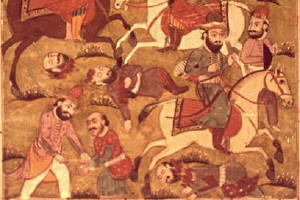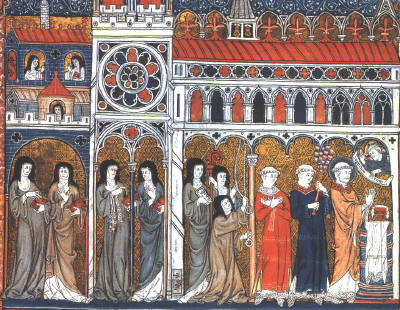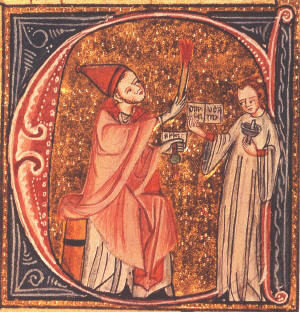
| The Gregorian Reform |
|
 |
The Gregorian Reform Movement (Eleventh
Century Reform Movement) Clerical Marriage, Simony, Investiture of Bishops |
| Primary Sources for the Gregorian Reform Movement |
Monastery
at Cluny Founded by William of Aquitaine 909 1046: Council of Sutri: Emperor Henry III (1039-1056) deposes three rival popes (Popes Benedict IX, Silvester III and Gregory VI). Henry nominates Pope Clement II (1046-1049) |
|
Henry nominates St. Leo IX (Bruno of
Egisheim) 1049-1054 Pope Leo IX holds church councils in Northern Europe that dealt with simony and clerical marriage; asserts papal primacy |
Pope Leo raises an army in 1053 and led it against the Normans who had been encroaching upon the lands claimed by the Papal States. The papal army was soundly defeated; Pope Leo was held prisoner by the Normans for 9 months. Leo died shortly after his release. |
| 1054 Schism between the Latin and Greek Churches | 1059 Election Decree of Pope Nicholas II (1058-1061): Cardinals elect the pope |
| Investiture 1073 | 1074 Papal Decree against Simony and Clerical Marriage |
 1076 Gregory VII (1073-1085) excommunicates Emperor Henry IV (1056-1106) |
1077 Emperor Henry IV does penance at
Canossa
Civil War in Germany. Gregory decreed Henry deposed again in 1079. Imperial antipope, Guibert of Ravenna (Clement III). Henry invaded Italy in 1081 and 1083. Gregory rescued by the Norman Prince Robert Guiscard. "I have loved righteousness, hated iniquity, and therefore I die in exile" Gregory VII |